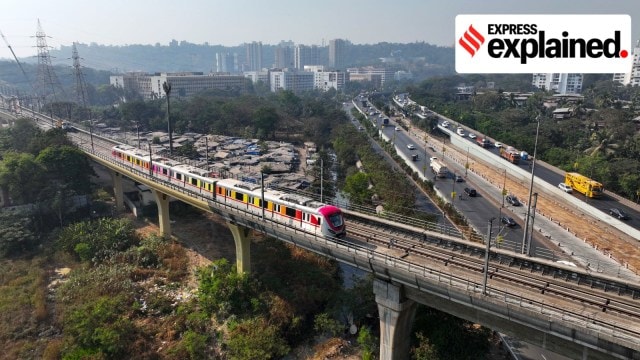All about Mumbai’s planned Metro Line 11, set to connect Wadala with Colaba
Mumbai New Metro Line 11 Route Map Explained: When is the line expected to be completed? What would the environmental impact be during construction, and what is its significance within Mumbai’s larger transport network?
 Construction on the line could start by 2027. (Representational/file photo)
Construction on the line could start by 2027. (Representational/file photo)Mumbai Metro Expansion 2025: The Government of Maharashtra on Wednesday (September 3) sanctioned Metro Line 11, which will connect Wadala to South Mumbai, close to the Gateway of India in Colaba. The nearly Rs 24,000 crore project is likely to decongest traffic between central and south Mumbai and connect with several operational and proposed Metro lines.
What is Mumbai’s Metro Line 11?
An extension of the green line, Metro line 11 will be a 17.5 km route from Anik Bus Depot in Wadala to SPM Circle near the Gateway of India. The corridor will have 14 stations, 13 of which will be underground.
It will run through some of the most populated and crowded parts of the city, including Sewri, Byculla, Nagpada, Bhendi Bazaar, Crawford Market, CSMT and Horniman Circle, to reach Colaba. This line will be an extension of Metro Line 4 (Wadala-Thane-Kasarvadavli), making Wadala a prominent interchange station.
Why is the line significant for the city?
South Mumbai has historically been underserved by the Metro network, despite being a hub for business, jobs and tourism. Line 11 will introduce direct Metro connectivity to major commercial centres like Fort and Colaba.
The line also promises to decongest major roads and give daily commuters an efficient alternative to suburban trains and buses. With connectivity between the Metro network, Monorail and suburban rail, the corridor could benefit lakhs of commuters.
What is the cost and the funding source?
The estimated cost of Rs 24,000 crore is almost double the amount initially proposed, due to route extension and the increase in station numbers.
The Japan International Cooperation Agency (JICA) has expressed interest in funding the project under Official Development Assistance loans. The body has long funded and provided technical assistance to metro projects in India, including the Delhi Metro.
Now, the Maharashtra Cabinet has paved the way for the project with an approval given to guarantees for securing international loans. Additionally, the government has asked for equity from the Centre and subordinated debt (considered to be higher risk) to finance the project.
When will construction begin and reach completion?
The project has been handed over from the Mumbai Metropolitan Region Development Authority (MMRDA) to the Mumbai Metro Rail Corporation Ltd (MMRC) for implementation. Pre-construction activities, like detailed design, environmental clearances, appointment of consultants and tendering, are currently underway. Next, the Union Cabinet will give its approval, followed by the loan signing and the tendering process at a later stage, according to the MMRCL.
The actual construction will begin around 2027 and is expected to be completed by 2030.
What is known about the likely impact on the environment during construction?
The official draft of the Environmental Impact Assessment states that the corridor for the line will involve cutting 2,200 trees and require clearances as it runs through coastal regulation and eco-sensitive zones. Approximately 104 acres of land will be required, of which 92 acres are under the government and 12 acres are privately owned.
Approximately 56 acres will be permanently taken over, and 48 acres will be temporarily used. The car shed is planned at Anik, Pratiksha Nagar, on 39 acres of land belonging to Brihanmumbai Electricity Supply and Transport Undertaking (BEST), which will also house bus operations as an integrated facility.
How will Line 11 connect with other metro lines and other transport systems?
Metro Line 11 will connect with Line 4 at Wadala and with Metro Line 3 (Aqua Line) at CSMT.
A link to Dharavi is also being envisioned to reconnect with Line 3, creating a large multi-modal transport hub where the Metro, suburban train, and buses will converge. The corridor will also be integrated with the Monorail at Wadala and suburban train stations at Byculla and CSMT. This will enable seamless transfers among various modes of transport, reducing travel time and improving last-mile connectivity.
What is the expected ridership and service pattern?
The Detailed Project Report from the Delhi Metro Rail Corporation has estimated that Line 11’s daily ridership will be around 5.8 lakh in 2031 and will increase to over 10 lakh in 2055. The trains will operate with six-car formations at a speed of up to 80 kmph, and in peak hours, they will run at an interval of 2.5 minutes.
- 01
- 02
- 03
- 04
- 05






































